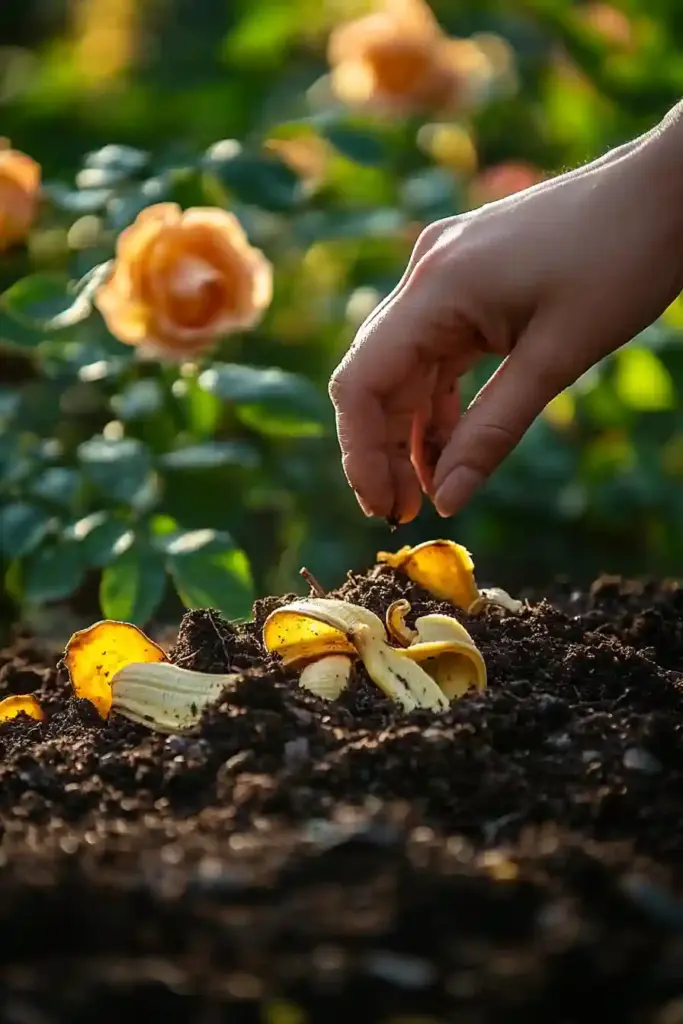Few things bring elegance to a garden like the vibrant, velvety bloom of a rose. Whether you’re nurturing a brand-new rose bed or trying to revive older plants, understanding how to make roses bloom more can turn your yard into a dazzling floral showcase. From choosing the right soil to natural nutrient boosters, there are many easy, effective ways to coax more blooms from your roses throughout the growing season. In this guide, we’ll walk you through 15 tried-and-true rose care tips that promote healthier growth, prevent common problems, and give you stunning results—one blossom at a time.
Looking to amplify your garden’s beauty even further? Feel free to check out Create an English Garden with These 14 Classic Flowers. This companion guide offers creative ideas and practical steps for integrating traditional English garden elements, making it easier than ever to create a charming, cohesive outdoor sanctuary that celebrates a variety of perennial blooms.
🌹 1. Boost Blooming with Natural Nutrients
Use Banana Peels for Potassium and Phosphorus
Banana peels are more than just kitchen scraps—they’re loaded with potassium and phosphorus, two essential nutrients that fuel flower production in roses. Instead of burying them whole, try blending banana peels into a compost tea or adding them to your compost pile for better absorption. This not only improves soil structure but gives your roses the bloom-boosting power they crave.
🌿 2. Supercharge with Alfalfa
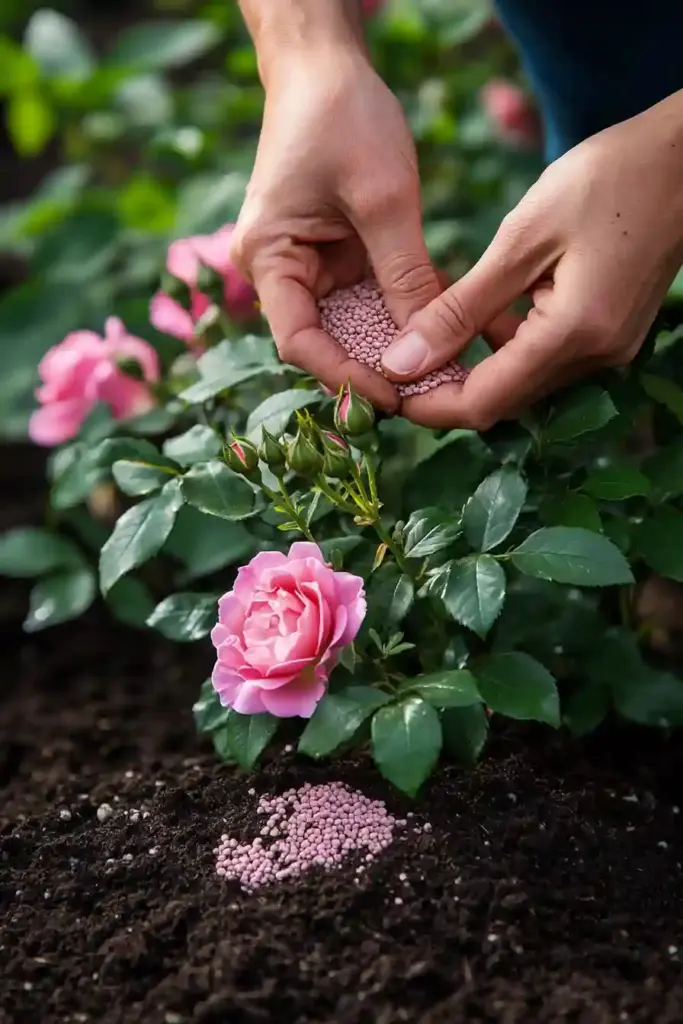
Alfalfa is a secret weapon among experienced gardeners. It contains growth stimulants and key nutrients like nitrogen and magnesium that roses love. Sprinkle ½ to 1 cup of alfalfa pellets around each rose bush, then water thoroughly. Want even more benefits? Brew a batch of alfalfa tea by soaking the pellets in water for a few days and pouring the mixture at the base of your plants.
🌼 3. Feed Consistently for Continuous Blooms
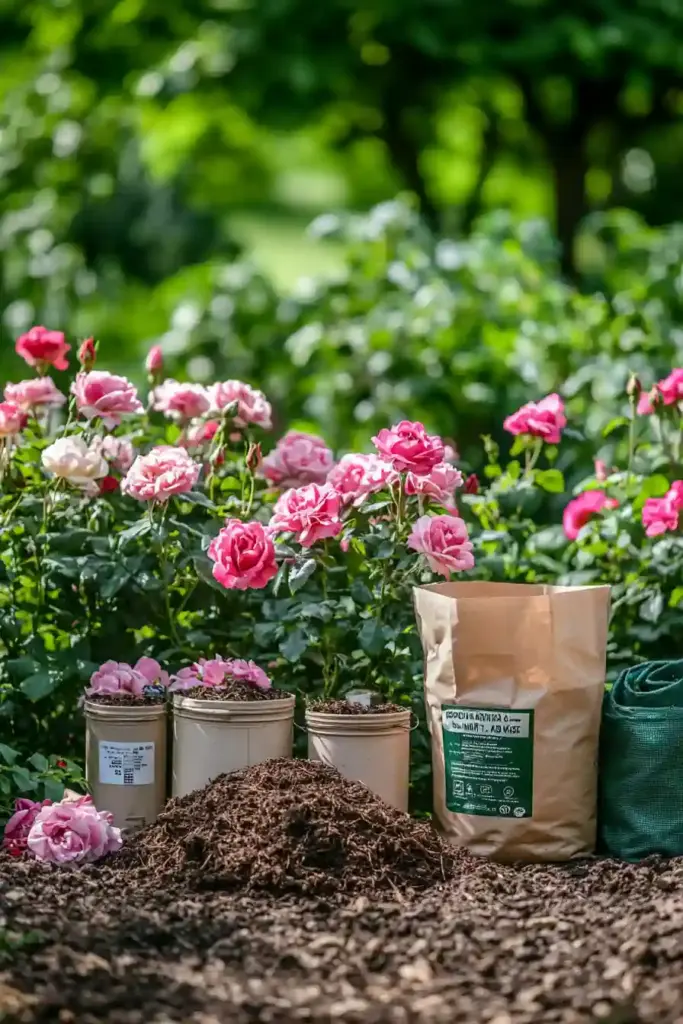
Roses are heavy feeders, and to get them blooming consistently, you’ll need a regular fertilizing schedule. Use a balanced fertilizer in early spring, reapply after the first major bloom, and continue every 2–3 weeks until late summer. In early fall, switch to a low-nitrogen option like bone meal to help strengthen the roots before winter. Compost and aged manure are excellent additions for ongoing soil enrichment.
💧 4. Water Deep and Right
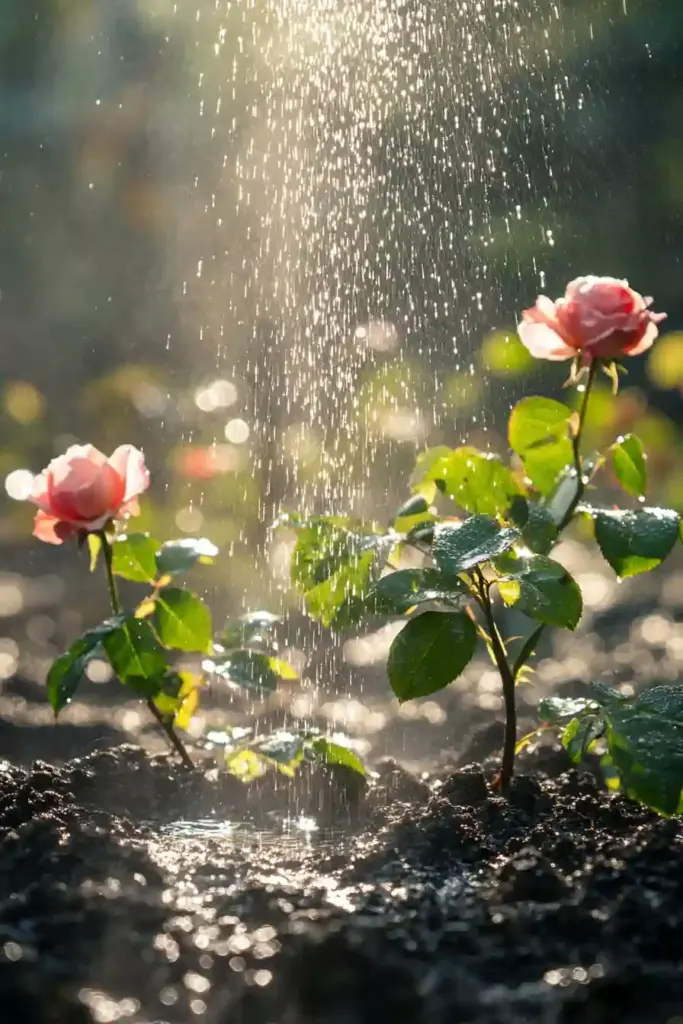
Roses hate inconsistent watering. Shallow watering encourages weak roots, while too much water can cause rot. Use drip irrigation or a soaker hose to deliver moisture directly to the roots without wetting the leaves. Water in the morning to allow the foliage to dry during the day, which helps prevent fungal diseases like powdery mildew and black spot.
✂️ 5. Prune for Stronger Blooms
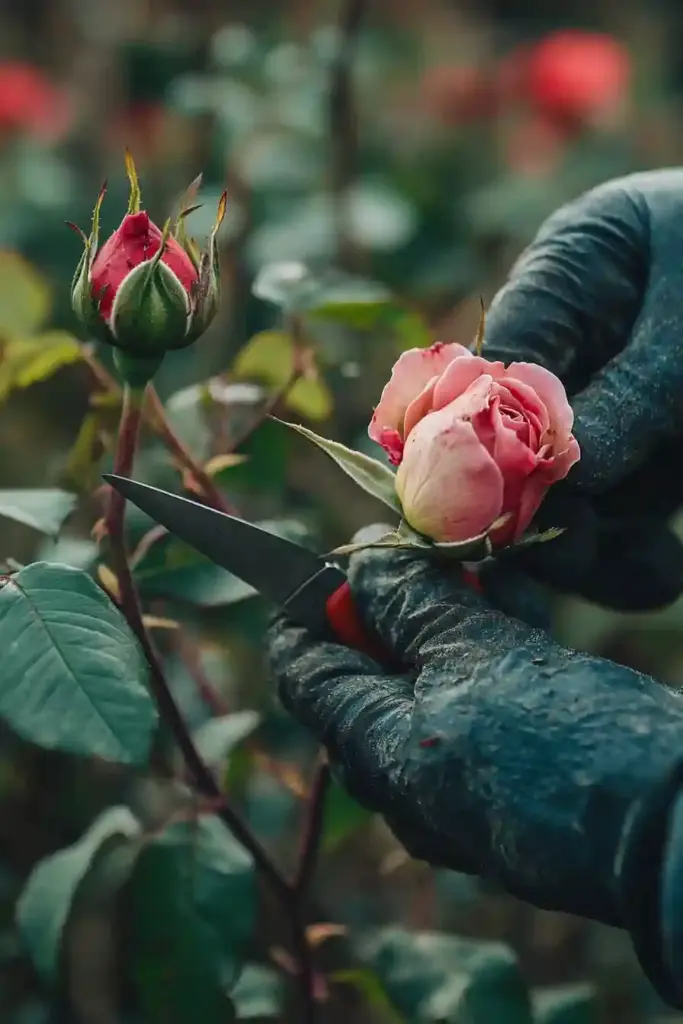
Pruning isn’t just about shaping your plant—it’s essential for bigger, better blooms. In early spring, prune away dead, damaged, or crossing branches. Always cut at a 45-degree angle about ¼ inch above an outward-facing bud to direct new growth outward and improve airflow. Healthy pruning promotes stronger stems and more flower buds.
🐛 6. Keep an Eye Out for Pests and Disease
Routine inspections can save your roses from trouble before it starts. Watch for signs like yellowing leaves, holes, spots, or unusual wilting. Common rose pests include aphids, thrips, and spider mites, while diseases like black spot and rust can spread quickly. Catching issues early allows you to apply natural remedies—like neem oil or insecticidal soap—before serious damage occurs. Healthy roses start with attentive care.
🌾 7. Mulch to Retain Moisture and Block Weeds
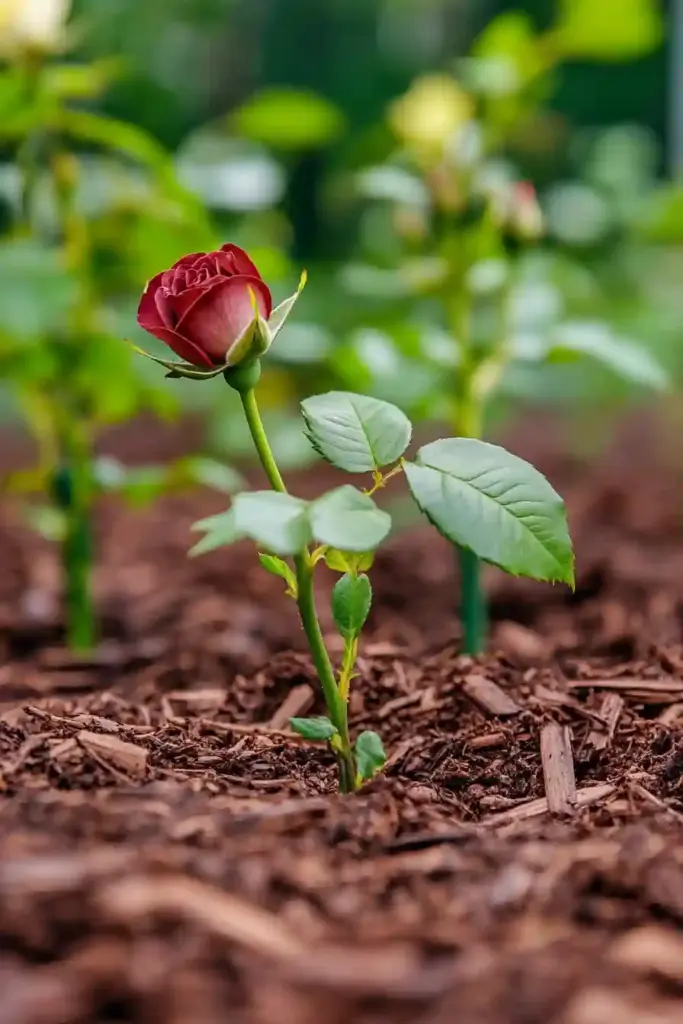
Mulching is one of the simplest yet most effective ways to improve your rose garden. Apply a 2–3 inch layer of organic mulch, such as shredded bark, straw, or compost, around the base of your plants. Mulch helps regulate soil temperature, retain moisture, and suppress weeds. It also prevents soil from splashing onto the leaves during watering, which reduces the risk of fungal infections.
🌱 8. Choose Well-Draining Soil
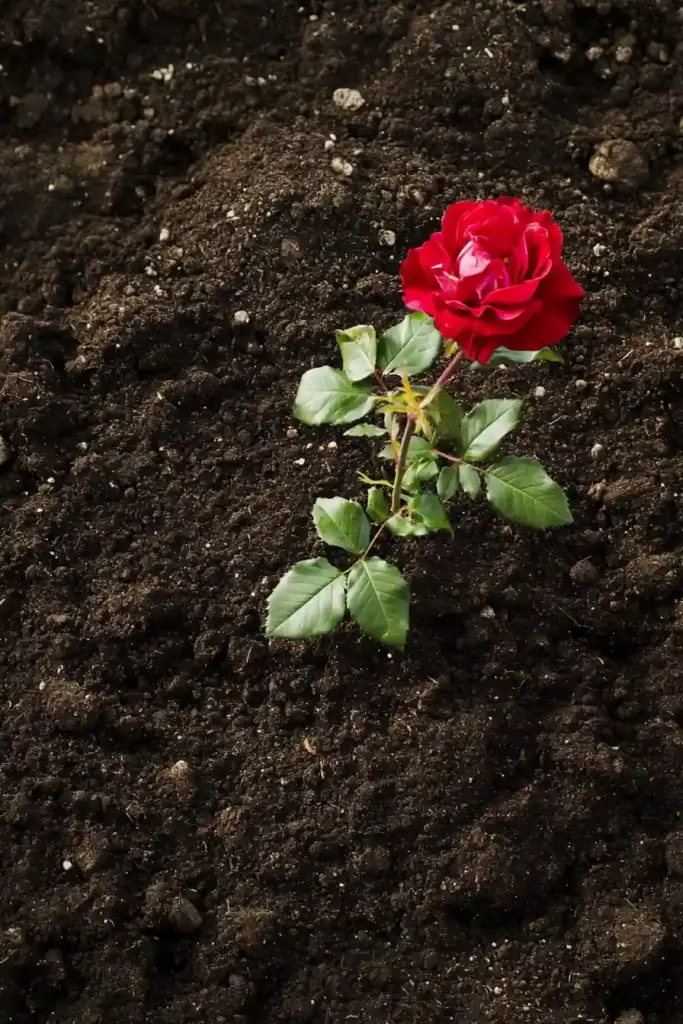
Roses hate soggy roots. Poor drainage can lead to root rot and stunted growth. If your garden has heavy clay or compacted soil, amend it with compost, sand, or perlite to improve aeration. Raised beds or mounded planting areas can also help prevent standing water around your roses, giving them a solid foundation for healthy growth.
☀️ 9. Sunlight Is Non-Negotiable

Roses need at least six hours of direct sunlight each day—preferably morning sun, which helps dry dew and prevent disease. Plant your roses in a location that avoids prolonged shade from trees, buildings, or fences. Adequate sunlight promotes stronger stems, more blooms, and better resistance to pests and diseases. Also, spacing your plants properly improves airflow and minimizes mildew risk.
🌸 10. Plant Reblooming Varieties for More Flowers

If you want roses that bloom all season long, choose reblooming varieties like Knock Out®, Bright Melody, or Fairy Moss. These types are low-maintenance and known for their resilience and disease resistance. To encourage repeat blooms, be sure to deadhead (remove spent flowers) regularly—this signals the plant to produce more flowers instead of going to seed.
🥚 11. Strengthen with Crushed Eggshells
Eggshells are a fantastic, natural source of calcium—an essential nutrient for strong cell walls and sturdy stems. Rinse, dry, and crush the shells into a fine powder before sprinkling them around the base of your roses. This not only strengthens plant structure but can also help balance soil pH and deter certain pests like slugs. Use sparingly and mix into the soil for best results.
☕ 12. Add Coffee Grounds for a Nitrogen Boost
Used coffee grounds contain nitrogen, which supports lush green foliage and overall plant vigor. Sprinkle a light layer around your rose bushes or mix the grounds into your compost pile. While beneficial, be cautious—too much can increase soil acidity and overwhelm your roses. Stick to moderation, and you’ll see greener, more vibrant leaves.
🧴 13. Manage Insects Naturally
Skip the harsh chemicals and opt for organic pest control methods to keep your rose garden thriving. Neem oil, insecticidal soap, or even a homemade garlic spray can effectively manage pests like aphids, whiteflies, and spider mites without harming beneficial pollinators like bees and ladybugs. Apply in the early morning or late evening to avoid sunburn on the foliage.
🌳 14. Protect the Roots
Healthy roots are the foundation of a thriving rose bush. When weeding or planting near your roses, use gentle tools and techniques to avoid disturbing their root systems. Damaged roots can lead to weak growth and leave your plants vulnerable to disease. A consistent layer of mulch also helps insulate and protect the root zone throughout the season.
🎶 15. Try Classical Music for a Blooming Experiment
While not backed by hard science, many gardeners swear by the effects of music—especially classical tunes—on plant growth. The theory is that the vibrations may stimulate cell activity and overall vitality. It’s certainly a fun experiment, and at the very least, it creates a peaceful, joyful atmosphere in your garden. Your roses might just surprise you!
🌺 Conclusion: A Blooming Garden Starts with Thoughtful Care
Learning how to make roses bloom more doesn’t require a green thumb—just consistent attention and the right techniques. From enriching your soil naturally to choosing sunlight-rich planting spots and staying ahead of pests, each tip helps lay the groundwork for stronger, more beautiful blooms. Whether you’re experimenting with banana peels or serenading your roses with classical music, these thoughtful care strategies will reward you with healthier plants and a garden full of vibrant, fragrant flowers. Happy growing!


